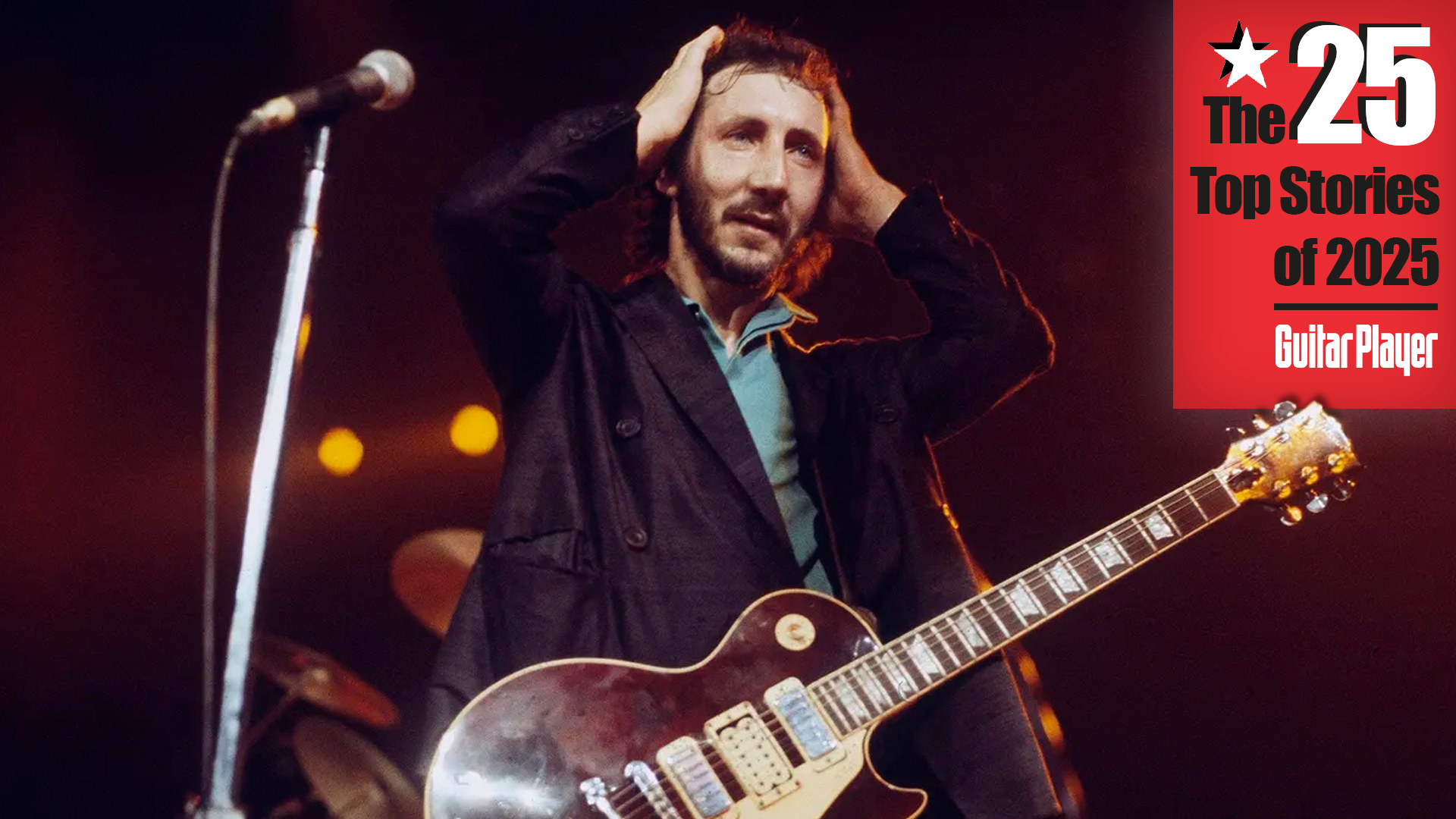“I asked if I could take six strings off and try it and he goes, ‘If you buy it, you can do whatever you want’”: A new Eddie Van Halen-narrated documentary details how he got hooked on modding guitars – and subsequently created Frankenstein
The free-to-watch mini-doc finds the guitarist talking about his earliest guitars, and his quest for his one true guitar love

The Journey to Frankenstein, a new documentary detailing Eddie Van Halen’s guitar journey leading to the creation of the Frankenstein Super-strat, has been released on YouTube.
Created by Irish filmmaker Simon Alkin, the mini-documentary is narrated by Eddie Van Halen himself with Alkin patchworking old interview clips together.
It focuses on the guitars that preceded the Frankenstein, which would become his original go-to model, beginning with his first-ever guitar; a $40 Teisco Del Rey purchased in 1967 when he was 12.
Following his journey across a decade-long arc, he takes in Les Pauls, Stratocasters, Ibanez’s answer to the Explorer in the Destroyer, and plenty more as he searches for his holy grail instrument.
Some more obscure turns include him retrofitting a Univox 12-string guitar into a six-string. This venture marked the start of his modding journey, which would go on to be littered with ingenuity via the likes of the D-Tuna for Floyd Rose systems and, of course, many signature guitars.
As Eddie says, he found it in a store called Lafayette Radio Electronics. “I liked the guitar,” he can be heard reminiscing, “but it had 12 strings. I didn't want 12 strings, I wanted six, so I asked the guy, ‘Can I take six strings off and try it?’ and the guy goes, ‘No, but if you buy it, you can do whatever you want.’ So I bought it, took six strings off, and loved it.”

Eddie’s “first professional guitar” followed in the form of a $400 Goldtop Les Paul, which became his main guitar in the early-to-mid ‘70s.
All the latest guitar news, interviews, lessons, reviews, deals and more, direct to your inbox!
Other Gibsons used and abused over the 10 years the documentary covers include a ‘58 Les Paul Jr. and an ES-335 from the early ‘60s.
As per a Guitar Player interview in 1980, Eddie said, “I was playing a 335 for a while before we got signed, and it sounded fine. But, the other guys would go, ‘Come on, you look like Roy Orbison.’ Here's this little skinny punk kid playing a Ted Nugent axe. They said, ‘You're rock and roll – you ain't Roy Orbison. Either get some dark glasses or get rid of the guitar.’ So I dumped that and started playing a Les Paul again.”
By this point a fascination for modding guitars had taken hold, with an Ibanez Destroyer turned into The Shark and a hybrid Strat toyed with. This set him on a more direct path toward his eventual end point.
Frankie’s creation is also detailed, again in Eddie’s words, from its initial conception to its glorious final form.

“The guitar that I wanted to play did not exist,” Van Halen had said. “What I wanted was a cross between a Gibson and a Fender. A humbucking sound with a vibrato.”
Even after it reached the stage, Eddie continued to tinker with the guitar. As previously reported by GP, he made no apologies for his relentless modding, especially when it came to Frankie.
“That guitar went through a lot of different phases and changes,” he told Guitar Afficiando in 2014. “On the first [Van Halen] record, it had a stock vintage Fender Strat vibrato, then the Floyd came around, and then I added the dummy pickup at the neck. I kept changing it because I was tired of people copying my guitar.”

Alkin has called the documentary project “the version I can do without any money or budget behind me,” in what must have been an exhaustive process to piece [via Become a Guitarist Today].
Thankfully, he’s had assistance from Guitar World’s in-house EVH expert Chris Gill, and another specialist on all things Eddie, Steve Rosen, who provided multiple audio clips from his interview with the virtuoso. Gill has written extensively about the birth of the Frankenstein Strat for GW.
The full film is available to view on the Icons Remembered YouTube channel.
A freelance writer with a penchant for music that gets weird, Phil is a regular contributor to Prog, Guitar World, and Total Guitar magazines and is especially keen on shining a light on unknown artists. Outside of the journalism realm, you can find him writing angular riffs in progressive metal band, Prognosis, in which he slings an 8-string Strandberg Boden Original, churning that low string through a variety of tunings. He's also a published author and is currently penning his debut novel which chucks fantasy, mythology and humanity into a great big melting pot.

